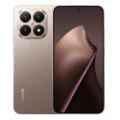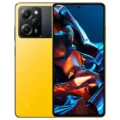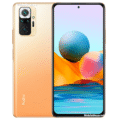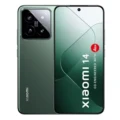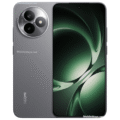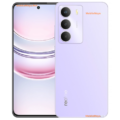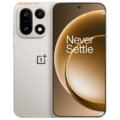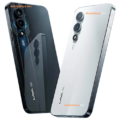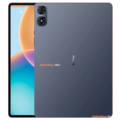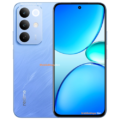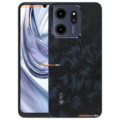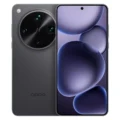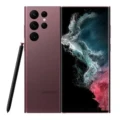Price List: Under Tk.5,000 | Tk.5001-10000 | Tk.10001-15000 | Tk.15001-20000 | Tk.20001-30000 | Tk.30001-40000 | More Mobiles
- Home
- All Mobile
- Xiaomi
- Xiaomi Redmi Turbo 5
Xiaomi Redmi Turbo 5
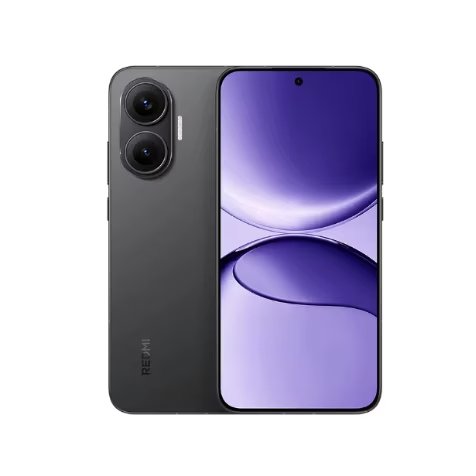

Specifications
Price in Bangladesh
| Expected Price | Coming soon |
General
| Device Type | Smartphones |
| Released | December, 2025 |
| Status | Available |
Hardware & Software
| Operating System OS => Every computer system run on a base software called Operating System (OS). Operating System controls all basic operations of the computer (such as smartphone, PDAs, tablet computers and other handheld devices). The Operating System allows the user to install and run third party applications (apps), apps are used to add new functionality to the device. | Android |
| OS Version | v15 |
| User Interface UI or user interface of a device is the look and feel of the on-screen menu system. How it works, its color scheme, how it responds to button presses, all of these things are part of the user interface. | HyperOS 2 |
| Chipset Chipset is a group of integrated circuits designed to perform one or a more dedicated functions, often with real time computing constraints, Popular smartphones are equipped with more advanced embedded chipsets that can do many different tasks depending on their programming. | Mediatek Dimensity 8400 Ultra (4 nm) |
| CPU CPU (Central Processing Unit) mostly known as processors, CPU processes instructions in order to carry out certain functions that make your device operate properly. Processors are often described as the brain of computers, smartphones and tablets, Smartphones and tablets rely on processors to carry out their every task, Processors are an incredibly important factor in selecting any type of computing device, including your smartphone. | - |
| GPU GPU (Graphics Processing Unit) is a single-chip processor designed to rapidly manipulate and alter memory to accelerate the creation of images in a frame buffer intended for output to a display, This includes things such as lighting effects, object transformations, and 3D motion. | - |
| RAM (Memory) RAM (Random Access Memory) is a type of computer memory that can be accessed randomly, any byte of memory can be accessed without touching the preceding bytes that allows information to be stored and accessed quickly from random locations. RAM is the most common type of memory found in computer systems, smartphones, tablets and other electronic devices. | 12 GB, 16 GB |
Design
| Dimensions | - |
| Weight | - |
| Colors |
Black, White, Blue |
Display
| Display Type Display Technology => A number of display technologies and types used in mobile phones => TFT (Thin Film Transistor), IPS (In-Place Switching), OLED (Organic Light Emitting Diode), AMOLED (Active-Matrix Organic Light-Emitting Diode), Super AMOLED (an even advanced version of AMOLED), Resistive Touchscreen (Resistive touchscreens contain two layer of conductive material with a very small gap between them which acts as a resistance), Capacitive Touchsceen (Capacitive touchscreen technology consists of a layer of glass coated with a transparent conductor) | AMOLED |
| Size | 6.67 inches |
| Resolution | 1220 x 2712 pixels |
| Brightness | 1400 nits |
| Refresh Rate | 120Hz |
| HDR 10 / HDR+ support |
Rear Camera
| Camera Setup | Dual |
| Main Camera | 50 MP |
| Second Camera | 8 MP |
| OIS | |
| Video | 4K@24/30/60fps, 1080p@30/60/120/240/960fps, gyro-EIS |
Front Camera
| Camera Setup | Single |
| Secondary |
20 MP |
| Video | 1080p@30/60fps |
Battery
| Battery Type Battery Type => Cell phones run on various kinds of batteries depending on the manufacturer, phone size or shape and features. There are basically four types of cell phone batteries => Lithium Polymer, Lithium Ion, Nickel Metal Hydride and Nickel Cadmium. | Li-Ion (Lithium Ion) |
| Placement | Non-removable |
| Capacity Battery Capacity is a measure (typically in Amp-hr) of the charge stored by the battery, and is determined by the mass of active material contained in the battery. The battery capacity represents the maximum amount of energy that can be extracted from the battery under certain conditions. | 6550 mAh |
Storage
| Storage Capacity | 256 GB, 512 GB |
| USB OTG |
Network
| 2G Network |
GSM 850 / 900 / 1800 / 1900 |
| 3G Network |
HSDPA 800 / 850 / 900 / 1700(AWS) / 2100 |
| 4G Network |
1, 3, 4, 5, 8, 18, 19, 26, 28, 34, 38, 39, 40, 41, 42, 48, 66 |
| 5G Network |
1, 3, 5, 8, 28, 38, 40, 41, 48, 66, 77, 78 SA/NSA/Sub6 |
| SIM SIM (Subscriber Identity Module) is a small card that contains mobile network subscriber's account information. This allows the phone using the card to attach to a mobile network. The SIM card is most commonly associated with GSM and UMTS mobile networks. Moving a SIM card from one phone to another allows a subscriber to switch mobile phones without having to contact their mobile network carrier. SIM cards can also be used by a phone to store limited amounts of data, such as phone numbers and text messages. | Standard SIM |
Data
| GPRS GPRS (General Packet Radio Service) is a packet oriented mobile data service on the 2G and 3G cellular communication system's global system for mobile communications (GSM), Generally, GPRS is used for the purpose of wireless data transfer, such as sharing pictures and videos or browsing the Internet via a mobile phone connection. | |
| EDGE EDGE (Enhanced Data GSM Environment) is a wireless network technology generally considered the next step in the 2G network offers data transfer rates up to four times faster than ordinary GSM networks, Generally, EDGE is used for the purpose of wireless data transfer, such as sharing pictures and videos or browsing the Internet via a mobile phone connection. | |
| Speed | HSPA, LTE, 5G |
| Web Browser Web Browser => a web browser is a software application used to locate, retrieve and display content on the World Wide Web, including Web pages, images, video and other files, The primary function of a web browser is to render HTML, the code used to design or markup webpages. | HTML5 |
Messaging
| SMS SMS (Short Messaging Service) is a text messaging service component of phone, Web, or mobile communication systems. It uses standardized communications protocols to allow mobile phone devices to exchange short text messages over the networks. | Yes |
| MMS MMS (Multimedia Messaging Service) is a standard way to send messages that include multimedia content (audio clips, video clips and images) to and from mobile phones over wireless networks using the WAP protocol. | |
| Email Email (Electronic Mail) is a system for receiving, sending, and storing electronic messages, Similar to a letter, email is text messages that may contain files, images, or other attachments sent via the internet to a recipient by using applications and software prograps. An email address is required to receive email, and that address is unique to the user. | Yes |
| IM IM (Instant Messaging) is an exchange of text messages through a software application, it enable you to create a kind of private chat room with another individual in order to communicate in real time over the Internet. | Yes |
Connectivity
| Bluetooth Bluetooth is a wireless communications technology for exchanging data between mobile phones, headsets, computers and other network devices over short distances without wires, Bluetooth technology was primarily designed to support simple wireless networking of personal consumer devices. | 6.0, A2DP, LE, aptX, LHDC 5 |
| Wi-fi Hotspot | |
| Infrared Infrared connectivity is an old wireless technology used to connect two electronic devices. It uses a beam of infrared light to transmit information and so requires direct line of sight and operates only at close range. | |
| USB | USB Type-C 2.0, OTG |
| GPS GPS The Global Positioning System is a satellite-based radio navigation system, GPS permits users to determine their position, velocity and the time 24 hours a day, in all weather, anywhere in the world, In order to locate your position, your device or GPS receiver must have a clear view of the sky. | GPS (L1+L5), GLONASS (G1), BDS (B1I+B1c+B2a), GALILEO (E1+E5a), QZSS (L1+L5), NavIC (L5) |
| NFC NFC (Near field communication) is a set of standards for smartphones and similar devices to establish peer-to-peer radio communications with each other by touching them together or bringing them into proximity, usually no more than a few inches. |
Media
| FM Radio | No |
| Loudspeaker | Yes, with stereo speakers |
| 3.5mm Jack | No |
Sensors & Security
| Fingerprint Sensor |
More
| Made By | China |
Performance Tests
PROS
- Excellent performance with Dimensity 8400 Ultra
- Vivid AMOLED display with 120Hz refresh rate
- Great camera with OIS and 4K video support
- Long-lasting 6550mAh battery
- 5G support with wide band coverage
- Latest Android 15 and HyperOS 2
- Premium stereo speakers
CONS
- No headphone jack
- No official IP rating
- No expandable storage
- Charging speed not confirmed yet
Xiaomi Redmi Turbo 5 Price in Bangladesh
The Xiaomi Redmi Turbo 5 is expected to launch in Bangladesh with two storage options: 12GB RAM with 256GB storage, and 16GB RAM with 512GB storage. Though the official price has yet to be announced, it is anticipated to fall in the upper mid-range segment, considering its powerful MediaTek Dimensity 8400 Ultra chipset, high refresh rate AMOLED display, flagship-grade camera setup, and large battery capacity.
Designed for users who demand power and performance without paying flagship prices, the Redmi Turbo 5 is a feature-packed Android smartphone running on the latest Android 15 with HyperOS 2. It stands out with a vivid 6.67″ AMOLED display, 120Hz refresh rate, 50MP dual rear camera, and a massive 6550mAh battery. Whether you’re into gaming, photography, or multitasking, this phone is crafted to keep up with your digital lifestyle.
Price & Variants
| RAM & Storage | Price (BDT) | Status |
|---|---|---|
| 12GB + 256GB | Coming Soon | Upcoming |
| 16GB + 512GB | Coming Soon | Upcoming |
Xiaomi Redmi Turbo 5 Specifications
The Xiaomi Redmi Turbo 5 is a premium mid-range smartphone packed with impressive hardware and software features for power users and performance enthusiasts. Here are its detailed specifications:
| Feature | Details |
|---|---|
| Model Name | Xiaomi Redmi Turbo 5 |
| Release Date | July 2025 |
| Market Availability | Upcoming |
| Official Price | Coming Soon |
| RAM & Storage | 12GB + 256GB, 16GB + 512GB |
Display and Design
The Redmi Turbo 5 sports a 6.67-inch AMOLED display with a crisp resolution of 1220 x 2712 pixels, offering sharp visuals and immersive colors. It supports a 120Hz refresh rate for ultra-smooth scrolling and animations, along with HDR10+ support for enhanced contrast and brightness. With a peak brightness of 1400 nits, outdoor visibility is excellent.
In terms of design, the phone is expected to come in Black, White, and Blue, maintaining a sleek, modern look. While dimensions and weight haven’t been officially confirmed, Xiaomi typically favors slim builds with a premium feel in this category.
Performance and Processor
Under the hood, the Redmi Turbo 5 is powered by the MediaTek Dimensity 8400 Ultra (4nm) processor, built for high-efficiency performance. It’s paired with either 12GB or 16GB RAM and 256GB or 512GB UFS storage, providing ample room and speed for multitasking, gaming, and app performance. However, there’s no mention of expandable storage.
This combination makes the device ideal for power users who want to enjoy seamless multitasking, high-frame-rate gaming, and overall fluid performance.
Camera and Video
The dual rear camera setup includes a 50MP main sensor and an 8MP secondary sensor, likely for ultrawide shots. Features like OIS (Optical Image Stabilization) and gyro-EIS enhance image clarity and video stability.
Video capabilities are flagship-grade, with support for:
- 4K at 24/30/60fps
- 1080p at up to 960fps (slow motion)
On the front, you’ll find a 20MP selfie camera capable of recording 1080p video at 30/60fps, ideal for vlogs and video calls.
Battery and Charging
One of the standout features of the Redmi Turbo 5 is its massive 6550mAh non-removable Li-Ion battery, which promises excellent screen-on time even with heavy usage. While the charging speed hasn’t been officially revealed, based on similar models, fast charging support is expected. With Android 15’s optimization and HyperOS 2, battery efficiency is likely to improve even further.
Connectivity and 5G Support
The Redmi Turbo 5 is 5G-ready and supports a wide range of global and regional bands across 2G, 3G, 4G, and 5G.
Other connectivity features include:
- Dual SIM support
- Bluetooth 6.0 with aptX & LHDC 5
- Wi-Fi Hotspot
- Infrared blaster
- USB Type-C 2.0 with OTG
- Advanced GPS with support for NavIC, QZSS, and Galileo
Additional Features
- Operating System: Android 15 with HyperOS 2, offering smoother UI transitions, enhanced customization, and security.
- Security: Under-display fingerprint sensor (likely optical).
- Audio: Stereo speakers deliver rich, immersive audio; no 3.5mm headphone jack.
- Sensors: Accelerometer, proximity sensor, compass, and more.
- Build Origin: Made in China.
Reason to Buy
Here are a few compelling reasons to consider the Xiaomi Redmi Turbo 5:
- Flagship-level Dimensity 8400 Ultra processor
- 120Hz AMOLED display with HDR10+ and 1400 nits brightness
- 50MP OIS rear camera with 4K video support
- Massive 6550mAh battery for all-day usage
- Great for gaming and multitasking with up to 16GB RAM
- Stereo speakers for immersive sound
- Wide 5G band support and advanced GPS options
Verdict
The Xiaomi Redmi Turbo 5 is shaping up to be a high-performance mid-range smartphone that borders on flagship territory. It combines power, premium display features, an advanced camera system, and a huge battery — all under one sleek design. It’s ideal for gamers, heavy app users, and content creators who want premium performance without flagship pricing.
If you’re looking for a phone that does it all — from powerful gaming to pro-level photography — the Turbo 5 might be one of the best value-for-money devices launching in 2025.
FAQ
Q: What is the release date of Xiaomi Redmi Turbo 5 in Bangladesh?
A: The phone is expected to launch in July 2025, but an official date hasn’t been confirmed.
Q: What is the price of Xiaomi Redmi Turbo 5?
A: The expected price in Bangladesh is yet to be announced, but it will likely fall in the mid to upper mid-range segment.
Q: Does it support 5G?
A: Yes, the Redmi Turbo 5 supports a wide range of 5G bands.
Q: Is the battery removable?
A: No, it has a non-removable 6550mAh battery.
Q: Does the phone have a headphone jack?
A: No, there is no 3.5mm headphone jack on this device.
Q: Which Android version does it use?
A: It runs on the latest Android 15 with Xiaomi’s HyperOS 2 skin.
Alternatives to Xiaomi Redmi Turbo 5
If you’re considering the Redmi Turbo 5, you might also want to look at these alternatives:
- Realme GT 6 – Snapdragon 8s Gen 3, AMOLED 144Hz, 5500mAh battery
- iQOO Neo9 Pro – Dimensity 9300, 1.5K display, great camera system
- Samsung Galaxy A55 5G – Exynos 1480, IP67 rating, One UI ecosystem
- Poco F6 Pro – Snapdragon 8 Gen 2, WQHD+ display, 120W charging
User Reviews
Disclaimer Note
We do not guarantee that the information of this page is 100% accurate and up to date.



